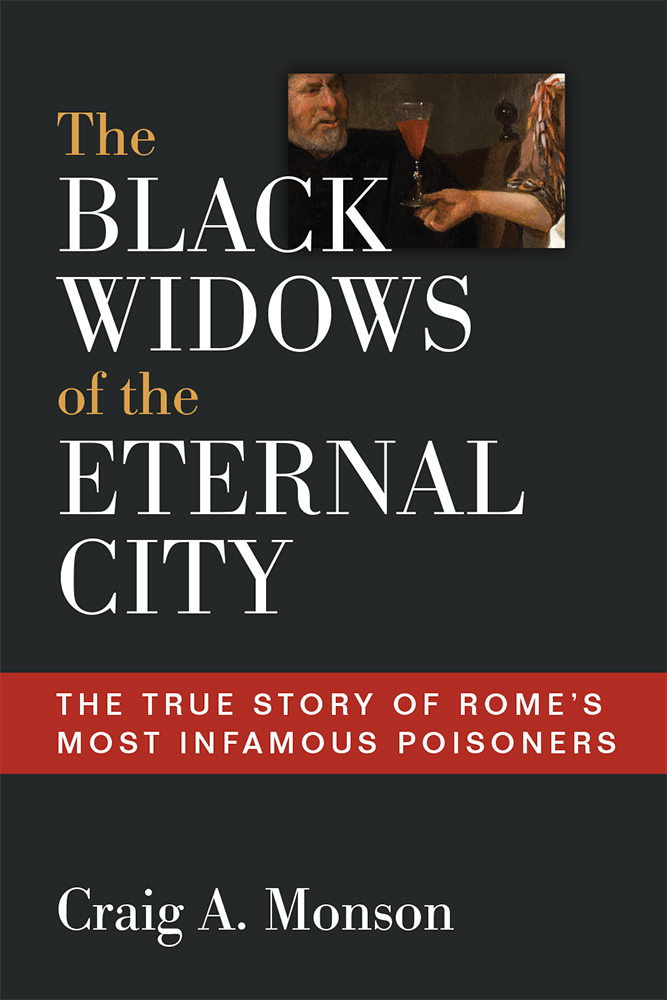Craig Monson is the Paul Tietjens Professor Emeritus of Music. His earlier books include “Habitual Offenders: A True Tale of Nuns, Prostitutes, and Murderers in Seventeenth-Century Italy” (2016); “Divas in the Convent: Nuns, Music, and Defiance in Seventeenth-Century Italy” (2012); and “Nuns Behaving Badly: Tales of Music, Magic, Art, and Arson in the Convents of Italy” (2010).

On a sweltering July afternoon in 1659, five women were hanged in Rome’s Campo de’ Fiori as the entire city watched. Their crime: allegedly brewing poison to kill their husbands, then selling it to other would-be widows. One gossip claimed immediately afterward that Rome’s recent plague had provided the perfect cover, “and therefore the poison may have killed five hundred husbands!”
Centuries of subsequent, similarly breathless narratives singled out a notorious psychic named Gironima Spana as the spider (a black widow, presumably) at the center of a deadly web of man-hating wives. For decades, Spana had mingled with Rome’s elite until a hangman’s noose put an end to her infamous career — but not her notoriety.
The newly recovered transcript of the 1659 investigation (which popes kept under lock and key for centuries, lest the poison recipe continue to circulate and more husbands succumb to it) prompts a reexamination of the crime, which has captured the public imagination for so long but has never been accurately told.
Orphaned before she fled Sicily at age 9, burdened with a spendthrift stepfather who squandered her inheritance, and, from age 14, with a profligate, womanizing husband, the real Gironima Spana nevertheless came to enjoy great renown as a psychic, until other poison purveyors’ incautious overenthusiasm caught authorities’ attention and exposed her darker side. It turns out, however, that Gironima may never have actually poisoned anyone, unlike dozens of others who escaped the gallows.

Most other wives implicated in the case vanished into Spana’s shadow in later retellings of the tale. These forgotten, would-be widows had indeed resorted to murder to escape impossible marital predicaments, ranging from their husbands’ financial incompetence to laziness, jealousy, infidelity, sodomy, battery, and even murder. This new account reestablishes these women’s place in their own story and reveals what happened to them in the end: the cosseted daughters of an aging linener, dissatisfied with married life and ready for a change; the beautiful wife of a jealous dyer, intent on killing her for catching a nobleman’s eye; a self-styled Mater Dolorosa, claiming only to have encountered the poison while investigating her son’s murder; the 20-year-old, twice married mother of two, determined to outmaneuver her scheming second husband before he kills her; the battered wife of an abusive, sodomite butcher, looking to escape an enforced second marriage; a lovesick duchess, married to an aging nobleman but infatuated with an amorous, young courtier; a fabulously wealthy heiress, who could not abide her aristocratic husband’s arrogance.
“Better to get yourself hanged,” one poison dealer exclaimed to an overcautious, indecisive client, left battered about the head, bruised, and with a split lip, all in one day. “Better to suffer just that single torment than so many: otherwise every day you’ll end up just like you are today” — a fitting slogan for the many wives who chose to risk a speedier end on a gibbet rather than endure a lifetime’s battery and abuse.




